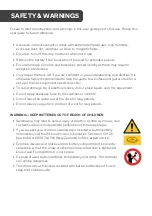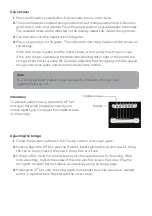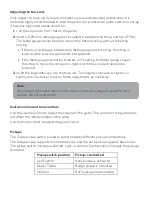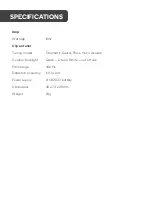
Over your guitar’s life, it will be necessary to change the strings. Strings break if
overtightened or strummed too heavily, but even if not broken, strings will sound dull and
less vibrant over time. A fresh set of strings will bring new life to an old guitar.
1.
To change your guitar strings, first loosen the current set by turning the tuning pegs
until each string is loose. When fully loosened, you will be able to remove them from
the headstock easily.
2.
With all the strings off, it’s a great time to clean your fretboard.
3.
Starting with the Low E (thickest) string, feed the string through the holes on the
bridge and saddle.
4.
Next, guide the string up along the fretboard and place it into the groove of the nut.
5.
You will need wire cutters to trim the strings to size, but be sure to allow enough extra
room for the string to wrap around each post. A good rule of thumb is to cut it at the
next rod’s length, or roughly 50 millimetres passed the rod.
6.
Feed the string into the appropriate tuning rod for the string (for the low E, this will be
the rod lowest on the headstock). Allow the string to protrude a few millimetres from
the other side of the hole, then kink the string to stay in place.
7.
Now begin turning the tuning peg so that the string winds over the rod, returning from
below. Continue so the string winds around the rod, and until the string becomes tight
enough to hear musical sounds when strummed.
From here, follow the tuning instructions to tune the string to pitch. Repeat these steps for
each of the strings.
RESTRINGING
Summary of Contents for Royale RYLP1EGPBKA
Page 1: ...LP1 ELECTRIC GUITAR WITH AMP AND ACCESSORIES RYLP1EGPBKA RYLP1EGPVBA ...
Page 14: ...NOTES ...
Page 15: ......


































